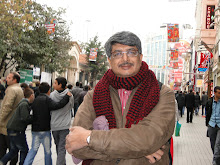My daughter has come to dread this question asked her by many of our relatives and family friends – “So, what do you plan to do after school”.
Her exasperated reaction – “I do not know….I am so confused…..There are so many choices and I cannot make up my mind”
This is the dilemma that our school going children face today. On one hand you have expectations of parents or peer pressure to handle. On the other, if you wish to research and list all options available before taking a decision – you are drowned in an avalanche of information and choice.
The intriguing and frustrating part is when commercial art seems as interesting as bio-technology or hotel management seems as exciting as a career in space engineering.
Cannot do both can we???? We definitely cannot switch from one to another without considerable pain and loss of academic years. In many cases it is just impossible to switch.
Let us have a closer look at what sort of choice we have.
We have at least forty major branches available in engineering. Add at least two dozen branches in medical and para-medical avenues.
Relatively straight forward avenues like Commerce have at least a dozen and half different courses at the graduate and post-graduate levels. This is followed by a mind boggling array of career options. We have the same situation in arts(all types), hospitality, languages, pure sciences, home sciences and perhaps in many other fields which I am not familiar with.
Are children or their parents supposed to sift through this information overload and come to some rational decision or is it easier and less painful to just flip a coin and decide.
Many a time, children change their minds on what they like and very often they come to dislike a subject or course because it does not meet their expectations or they encounter difficulties in understanding the same.
It has taken us adults so many years to find our true calling and, this is probably, the lucky minority. I believe a vast majority of adults feel trapped in what they do with little chance of a change.
Is it not, therefore, very unfair that our education system forces the choice of a career stream when we have barely begun to understand our own aptitude, likes and dislikes.
This certainly merits deeper thought and a move towards making our education system more flexible such that it equips a child to eventually find his / her own true calling.
Her exasperated reaction – “I do not know….I am so confused…..There are so many choices and I cannot make up my mind”
This is the dilemma that our school going children face today. On one hand you have expectations of parents or peer pressure to handle. On the other, if you wish to research and list all options available before taking a decision – you are drowned in an avalanche of information and choice.
The intriguing and frustrating part is when commercial art seems as interesting as bio-technology or hotel management seems as exciting as a career in space engineering.
Cannot do both can we???? We definitely cannot switch from one to another without considerable pain and loss of academic years. In many cases it is just impossible to switch.
Let us have a closer look at what sort of choice we have.
We have at least forty major branches available in engineering. Add at least two dozen branches in medical and para-medical avenues.
Relatively straight forward avenues like Commerce have at least a dozen and half different courses at the graduate and post-graduate levels. This is followed by a mind boggling array of career options. We have the same situation in arts(all types), hospitality, languages, pure sciences, home sciences and perhaps in many other fields which I am not familiar with.
Are children or their parents supposed to sift through this information overload and come to some rational decision or is it easier and less painful to just flip a coin and decide.
Many a time, children change their minds on what they like and very often they come to dislike a subject or course because it does not meet their expectations or they encounter difficulties in understanding the same.
It has taken us adults so many years to find our true calling and, this is probably, the lucky minority. I believe a vast majority of adults feel trapped in what they do with little chance of a change.
Is it not, therefore, very unfair that our education system forces the choice of a career stream when we have barely begun to understand our own aptitude, likes and dislikes.
This certainly merits deeper thought and a move towards making our education system more flexible such that it equips a child to eventually find his / her own true calling.







